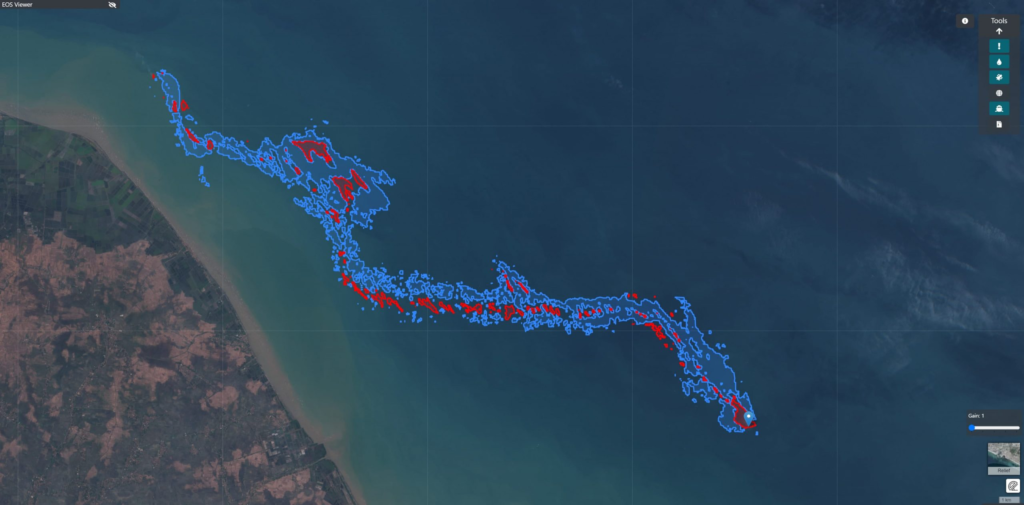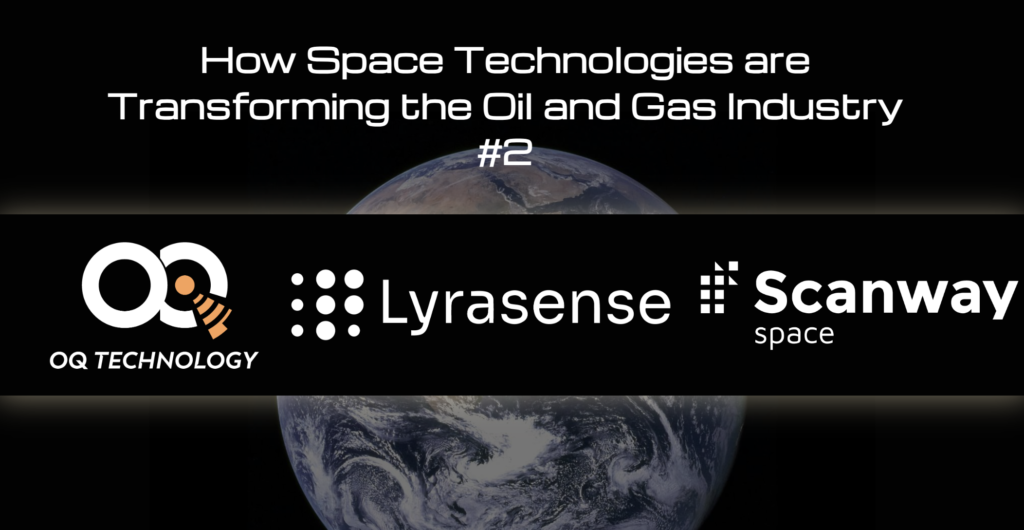How Space Technologies are Transforming the Oil and Gas Industry #1
As the oil and gas industry faces challenges of exploration, environmental compliance, and efficiency, space technology has become a powerful ally. Technologies originally developed for space exploration—such as satellite imaging, geophysical data analysis, and remote sensing—are now being used to enhance the way companies in this sector conduct operations, from exploration to sustainability management. Here are some notable examples of how Space Technologies contribute to the Oil and Gas industry:
1. Geophysical Exploration through Gravity and Magnetic Field Inversion by GReD

GReD is utilizing space-driven geophysical exploration techniques that involve gravity and magnetic field inversions to gain precise insights into Earth’s subsurface structures. By collecting high-resolution gravity and magnetic data via airborne, shipborne, or helicopter-borne surveys, GReD creates 3D models of underground resources. This process is vital in oil and gas exploration, as it allows the detection of geological structures such as faults, boundaries, and other formations that may indicate oil or gas deposits.
Through GReD’s joint inversion of gravity and magnetic data, exploration companies can accurately assess the mass density and magnetic susceptibility of the subsurface. The results yield a detailed subsurface model, which aids in identifying promising drilling sites and avoiding costly exploratory errors. GReD’s technology is especially valuable for offshore exploration and remote onshore sites where conventional ground surveys are challenging to conduct.
2. AI Superresolution of Satellite Imagery by NextAV

NextAV’s AI-powered super-resolution technology transforms the accessibility and clarity of satellite imagery, which is crucial for industries like oil and gas. By enhancing the resolution of publicly available satellite data, NextAV offers a cost-effective alternative to expensive commercial imagery. The oil and gas industry benefits from this technology through accurate monitoring of large extraction sites, pipeline integrity, and environmental hazards.
NextAV’s super-resolution imagery allows companies to detect subtle changes on the surface, including methane leaks, oil seepages, and geohazards like landslides or subsidence. For example, by capturing updates every few days, operators can identify and mitigate risks such as third-party interference or potential environmental damage. This increased frequency and image clarity empower companies to optimize site safety and operational efficiency while adhering to regulatory and environmental standards.
3. Oil Spill Detection and Monitoring by Orbital EOS
Oil spills represent a severe environmental threat, and timely detection is crucial for effective response and mitigation. Orbital EOS offers a cloud-based AI solution that leverages Earth observation satellites to detect, quantify, and forecast oil spills at sea. Using a network of radar and optical satellites, Orbital EOS continuously monitors the water around oil rigs, tankers, and offshore facilities, ensuring real-time detection of spills even in remote areas.

Orbital EOS’s solution stands out for its accuracy and proactive approach, allowing companies to take quick action to contain spills and minimize environmental damage. By integrating optical and radar satellite data with advanced analytics, the system identifies oil spill patterns, forecasts their movement, and assesses their potential impact. This allows for a targeted and efficient cleanup response, reducing both environmental and financial liabilities.
Conclusion
Space technologies are playing a transformative role in the oil and gas sector by enhancing exploration, boosting operational efficiency, and promoting sustainability. From advanced geophysical mapping by GReD to AI-powered emissions monitoring by Lyrasense, these innovations are providing oil and gas companies with tools that optimize operations while minimizing environmental impacts. With ongoing advancements in satellite and AI technologies, the partnership between space and Earth-bound industries is likely to deepen, further reinforcing safety, sustainability, and profitability in oil and gas operations.
Link to the second part of the article on Space Technologies in Oil and Gas:


